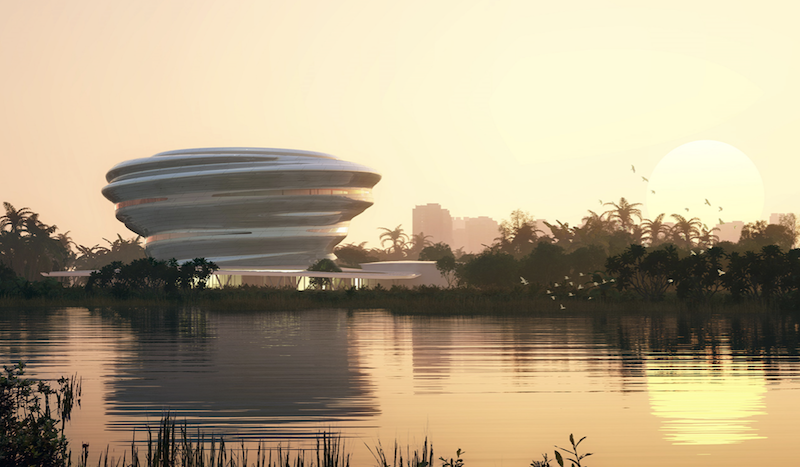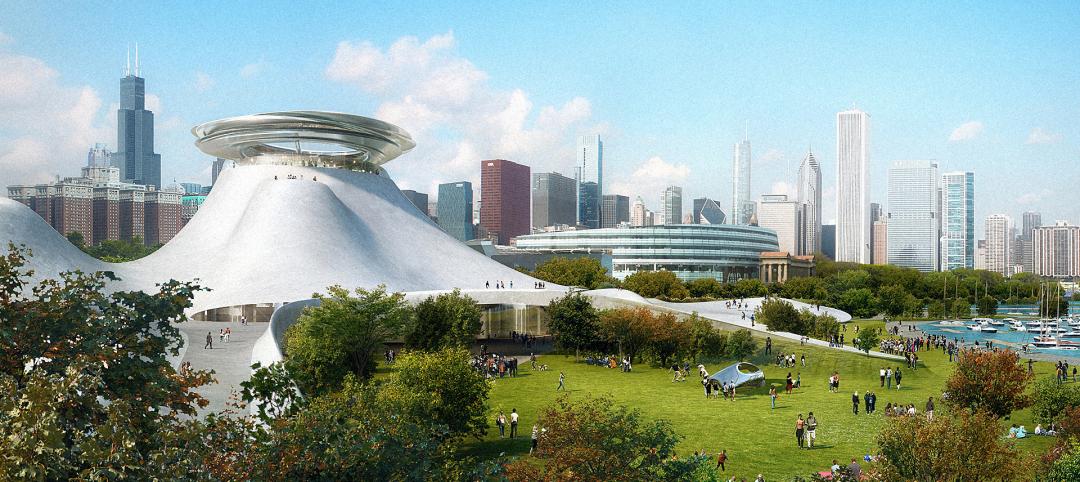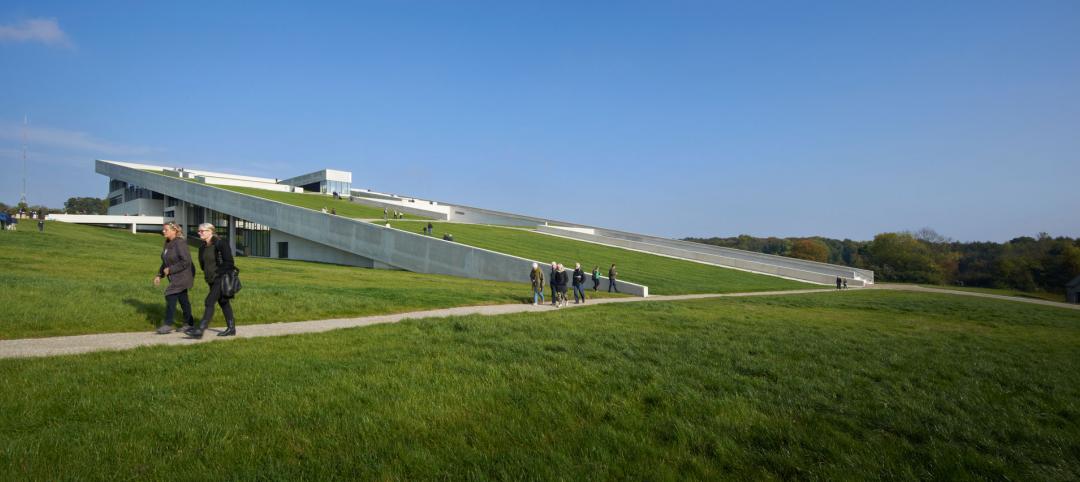MAD Architects has revealed the design for the Hainan Science and Technology Museum, located on Haikou’s west coast in Hainan province, shortly before the project is set to break ground at the end of August.
The 500,000-sf museum draws from the site’s dual urban and natural context, set against the backdrop of a tropical rainforest. The museum’s main pavilion is shaped like a cloud in dialogue with nature. From a distance, the building is designed to emerge from the city, while it will appear to visitors entering the museum area to be floating above the jungle.

About 299,000 sf of the museum’s total area is located above ground and includes permanent exhibition space, a planetarium, a giant-screen theater, and a flying theater. The museum’s interior structure comprises three floor-to-ceiling cores, curved trusses, spiral ramps, and a roof, that are all exposed to achieve harmony between the architectural forms and structural system. A skylight in the museum’s dome bathes the atrium in natural light while a sloping, spiraling exhibition space ascends from the central hall over five floors to connect visitors across the museum.
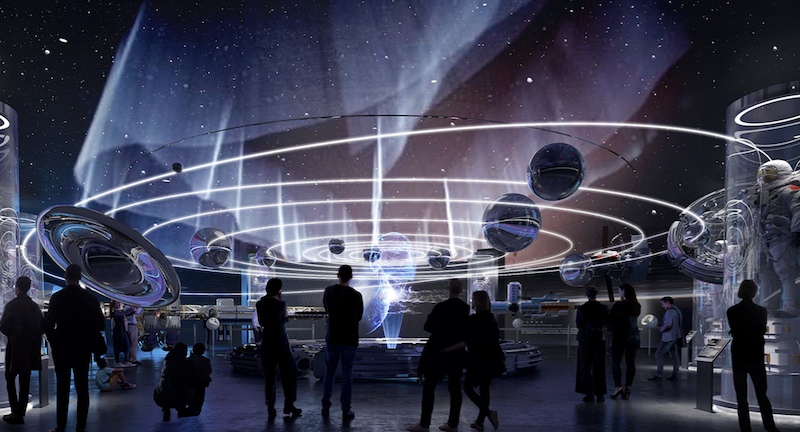
The exhibition experience begins on the fifth floor where the elevator opens to a 360-degree viewing platform with the sea and cityscape visible in the distance. Visitors on the top floor begin by exploring the technology and space galleries before proceeding down the ramp to the ocean and life science galleries on the fourth floor. The math and science galleries are on the third floor and the multimedia interactive experience area and the children’s playground are on the second floor. As visitors travel down the ramp, the can simultaneously enjoy the scenery and the exhibitions and a gallery running alongside the ramp extends the viewing experience.
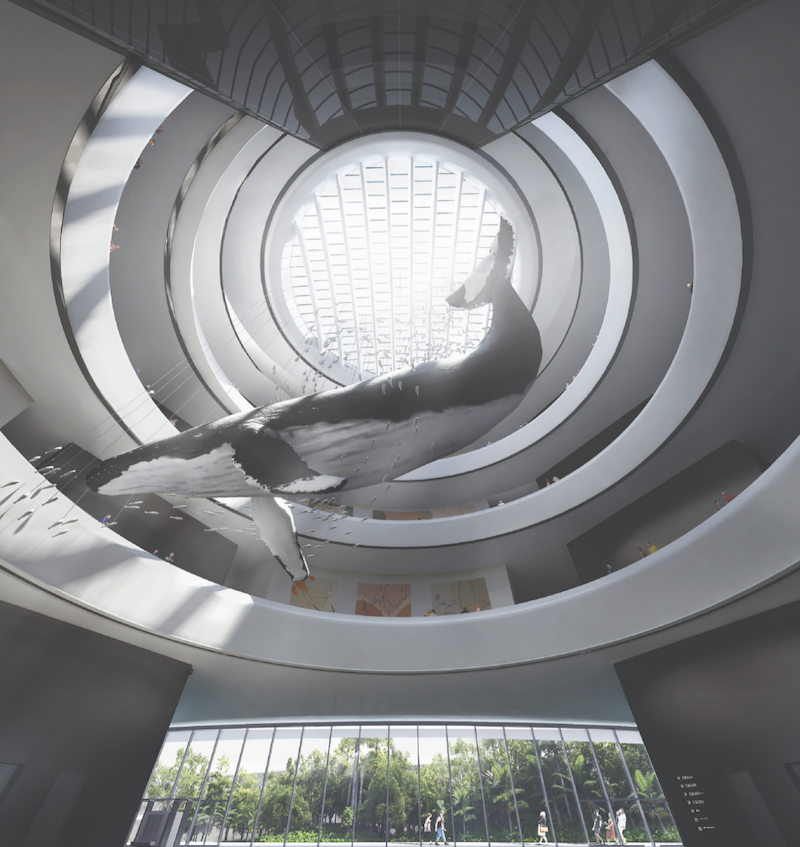
The museum’s facade of fiber-reinforced plastic gives the building a distinctive silver, reflective exterior from both near and far. An undulating canopy extends from the main pavilion in all directions to create a space specifically conceived to accommodate the public in Haikou’s humid and rainy climate. The north side of the canopy also hosts the giant screen and flying theater. The southwest corner hosts the planetarium and observatory. Outdoor public spaces include a crater-like sunken plaza and a reflecting pool.
The Hainan Science and Technology Museum is slated for completion in 2024.
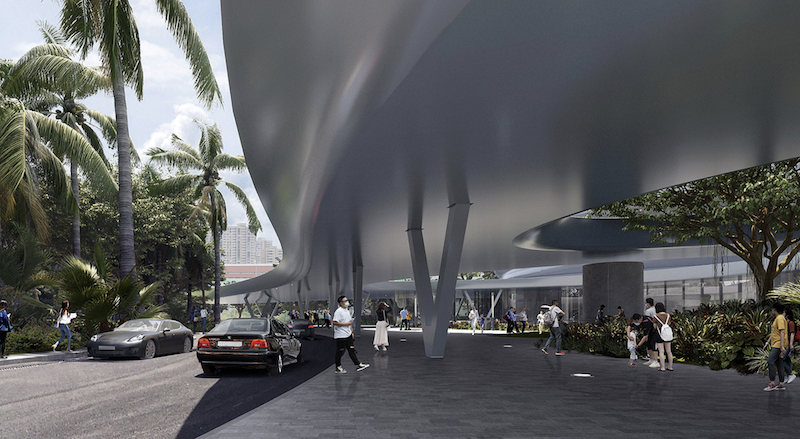

Related Stories
| Nov 14, 2014
Bjarke Ingels unveils master plan for Smithsonian's south mall campus
The centerpiece of the proposed plan is the revitalization of the iconic Smithsonian castle.
| Nov 12, 2014
Chesapeake Bay Foundation completes uber-green Brock Environmental Center, targets Living Building certification
More than a decade after opening its groundbreaking Philip Merrill Environmental Center, the group is back at it with a structure designed to be net-zero water, net-zero energy, and net-zero waste.
| Nov 7, 2014
NORD Architects releases renderings for Marine Education Center in Sweden
The education center will be set in a landscape that includes small ponds and plantings intended to mimic an assortment of marine ecologies and create “an engaging learning landscape” for visitors to experience nature hands-on.
| Nov 5, 2014
The architects behind George Lucas' planned Chicago museum unveil 'futuristic pyramid'
Preliminary designs for the $300 million George Lucas Museum of Narrative Art have been unveiled, and it looks like a futuristic, curvy pyramid.
| Nov 3, 2014
IIT names winners of inaugural Mies Crown Hall Americas Prize
Herzog & de Meuron's iconic 1111 Lincoln Road parking garage in Miami Beach, Fla., is one of two winners of the $50,000 architectural prize.
| Oct 29, 2014
Diller Scofidio + Renfro selected to design Olympic Museum in Colorado Springs
The museum is slated for an early 2018 completion, and will include a hall of fame, theater, retail space, and a 20,000-sf hall that will showcase the history of the Olympics and Paralympics.
| Oct 23, 2014
Prehistory museum's slanted roof mimics archaeological excavation [slideshow]
Mimicking the unearthing of archaeological sites, Henning Larsen Architects' recently opened Moesgaard Museum in Denmark has a planted roof that slopes upward out of the landscape.
| Oct 16, 2014
Perkins+Will white paper examines alternatives to flame retardant building materials
The white paper includes a list of 193 flame retardants, including 29 discovered in building and household products, 50 found in the indoor environment, and 33 in human blood, milk, and tissues.
| Oct 15, 2014
Harvard launches ‘design-centric’ center for green buildings and cities
The impetus behind Harvard's Center for Green Buildings and Cities is what the design school’s dean, Mohsen Mostafavi, describes as a “rapidly urbanizing global economy,” in which cities are building new structures “on a massive scale.”
| Oct 12, 2014
AIA 2030 commitment: Five years on, are we any closer to net-zero?
This year marks the fifth anniversary of the American Institute of Architects’ effort to have architecture firms voluntarily pledge net-zero energy design for all their buildings by 2030.


